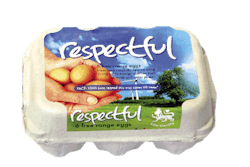
Ways to continually improve your business was a theme running through many of the papers at the International Egg Commission's Marketing and Production conference held in Budapest, Hungary.
IEC Chair, Willi Kallhammer said, "Being confronted with a flood of suggestions from the speakers should trigger ideas that you might be able to apply in your own companies."
Regarding current problems faced by the industry, such as avian influenza, the impact of biofuel growth on feed prices and concern over carbon footprints, he forecast that we will soon be talking about the ‘water footprint' as fresh water could become more valuable than oil.
He continued, "Each year, we learn more about the benefits to human health from eating eggs. Dr Don McNamara showed us how egg protein could benefit those wanting or needing to diet to lose weight. We must broadcast this information and educate the public as no-one else will do it for us."
Use the web
 0712PIiec1
0712PIiec1
Willi Kallhammer
The egg industry is missing out on using the internet to stimulate demand. Changes in the media, technology and society have created a new world, said Rene Boender of Great Opportunities in the Netherlands.
 0712PIiec2
0712PIiec2
Rene Boender
"The development of the worldwide web has made public relations public again. After years of almost exclusively focussing on the conventional media, the web had revolutionised communication. The material you put on the web can drive people into the purchasing process if its content is inspiring," he added.
 0712PIiec3
0712PIiec3
David Bosshard
"Do consumers really hear you?" he asked. He was highly critical of the industry's lack of willingness to talk with its end customers.
The egg business is good but it needs to become great. "Eggs can play a greater part in nutrition around the world than they do today," he said. He predicted that egg consumption will go up by 3% next year but more importantly, the value of sales will rise faster than this.
 0712PIiec4
0712PIiec4
Franz Hofer
Differentiate: the key to success
‘Differentiate or die' is a truism that applies to all businesses including eggs, according to David Bosshart of the Gottlieb Duttweiler Institute in Switzerland.
 0712PIiec5
0712PIiec5
Dr Don McNamara
"We all need better innovation to make our businesses stronger in the future. To do this, we need managers with imagination so that they can continually improve their businesses," he added.
 0712PIiec6
0712PIiec6
Kevin Burkum
Brands are growing in importance. Consumers need choice and it is the brand that differentiates products. It is essential to know precisely what makes consumers tick and particularly whether they are prepared to pay a higher price or not. With the evolution of technology and in particular the internet with its search engines, managers have better tools than ever before for finding out more about the market and what consumers think.
 0712PIiec7
0712PIiec7
Nan-Dirk Mulder
Packaging adds value
Turning packaging from a cost factor into a value creator requires an understanding of the integral needs of customers, a passion for products and services and communicating the right' message, said Franz Hofer of Ovotherm, Austria.
 0712PIiec8
0712PIiec8
Pedro Corrêa de Barros
Regardless of the basic functionality of packaging, optimisation is the name of the game for the egg pack producer in order to support his customers in improving their business. This can be done through optimising both the complete supply chain and consumer appeal.
.jpg?auto=format%2Ccompress&fit=max&q=70&w=400) 0712PIiec9
0712PIiec9
Evgeny Kusnetsov
Optimising consumer appeal supports the marketing effort and helps build the brand. "Packaging is the number one medium to build and transport your image. It is a strong differentiator as it conveys your positioning and message to the consumer," he added. He continued, "The perception of your products is conveyed by the brand on the packaging. Packaging is the only differentiator between different types of eggs."
 0712PIiec10
0712PIiec10
Professor Hans-Wilhelm Windhorst
Eat eggs to diet
Dr Don McNamara of America's Egg Nutrition Center reminded his audience about the value of egg protein regarding the aspects of satiety, lean tissue retention and muscle tissues accretion, and this offers great promotional potential. "Currently one of our biggest health concerns in the western world is obesity. Protein can play an important role in helping to control this problem, through its satiety effect and ability to retain muscle tissue when you try to lose weight," he added.
 0712PIiec11
0712PIiec11
Henry Kuhl
Latest research findings have confirmed that protein exerts a greater thermic effect than fat and carbohydrates. Higher protein diets increase satiety more than lower protein diets and better facilitate weight loss, i.e. they promote a greater loss of fat than muscle. Egg yolk protein have a satiety effect greater than previously predicted, and adding eggs to a low-calorie diet can enhance weight loss and increase dietary compliance.
He concluded with a reminder that there were at least a dozen good reasons to eat eggs: high quality protein, nutrient-dense, essential fatty acids, high in choline, lutein-rich, versatile, affordable, delicious, satisfying, convenient, can be used as a single serving and they are a great snack food.
Maximising the budget
"Marketing as we know it is under siege," claimed Kevin Burkum of the American Egg Board. His solution is an integrated marketing communications approach.
This makes the most of any marketing budget. Traditional approaches are failing because it is harder to reach people today. Back in 1965, just three television commercials reached 80% of the US population between 18 and 49 years of age. Today, it takes 425 commercials to reach the same number of people. In 1960, mass media comprised just three media television, radio and magazines. By 2006, it had evolved to include some 25,000 internet broadcast stations as well.
People today are bombarded by many messages estimated to be some 3000 daily against just 650 in 1985. There are 393 million e-mail users and around 30 billion e-mails are received each day. Of these, some 13 billion are unsolicited! This technological development means that closer and more relevant connections can be made anytime, anywhere.
Biofuels hit all sectors
All sectors of the value food chain in the egg industry feed manufacturers, breeders, producers, packers, retailers and eventually consumers feel the adverse effects of the higher costs arising from the growth in the biofuels industry, said Nan-Dirk Mulder from Rabobank International in the Netherlands.
However, he pointed out that while biofuels are one of the main drivers behind the rising soft commodity prices, it is not the only one. Other factors include higher food demand in developing countries, trade liberalisation in the soft commodity trade with some Asian countries, GMO-free buying restricted flexibility in purchasing and tightening wheat supplies from major exporters (EU-27, Canada and the Ukraine). There are also concerns about wheat crop prospects in Argentina and Australia, Russian export restrictions, a demand push from the EU for maize due to high wheat prices and poor maize harvests in south-east Europe.
Mr Mulder forecast that global egg demand will rise by 45% during the next two decades to more than 90 million tonnes in 2025. Egg production will expand by 15 million tonnes between 2005 and 2015, some 70% of which will be in developing countries. However, he warned, "Price increases could reduce this growth. An egg price rise of 20% would deflate demand by 0.5%, which is equivalent to 300,000 tonnes a year," he added.
Carry-over cannot be prevented
Pedro Corrêa de Barros of the European Feed Manufacturers' Federation (FEFAC) in Belgium said that most EU feed mills are multi-purpose. This implies that carry-over or the presence of substances that do not belong in the feed being prepared but had been carried over from a previously processed batch could not be eliminated, but minimised.
As zero carry-over in multi-purpose feed mills is not achievable, the feed industry should have the objective to reduce and control carry-over via good practice and establish thresholds for technically unavoidable carry-over. These must be achieved without compromising EU feed and food safety standards.
FEFAC has produced a guide to good practice for compound feed manufacturing (EFMC), and member countries have used this as a basis to draw up their own national codes of practice.
Good future for products in Russia
Domestic production of egg products in Russia currently only contributes 33% to total supplies. Evgeny Kusnetsov of Praxis Ovo, Russia, believes that this proportion will grow in future because of increasing domestic consumption of liquid products, more interest in local production and improving quality of domestic egg products. Furthermore, there have been rapid developments in technology related to egg products, the introduction of specialised products and growing exports of liquid eggs to Europe (where they are pasteurised and packed or dried). National support for Russia's agri-industrial sector has helped to boost this sector.
East outpaces west
Between 2000 and 2005, the growth rates for both egg production and trade in most of the Eastern European and CIS countries were considerably higher than in the EU of 15 countries, according to Professor Hans-Wilhelm Windhorst, IEC's statistical analyst. Furthermore, he forecasts that these trends are likely to continue over the next decade although he admitted that much depends on the impact of the banning of conventional cages in the EU by 2012 and in Germany by 2009. Another vital factor is whether outbreaks of avian influenza can continue to be prevented.
Washing aids food safety
Egg washing has been a well established practice for more than 40 years. It is carried out routinely in those countries where authorised or licensed egg packing centres wash table eggs or eggs destined for the egg products sector under supervised conditions, Henry Kuhl of America's Kuhl Corporation told his audience.
He continued, "As regulators are increasing food safety awareness, egg washing is receiving renewed attention in countries where it is not yet allowed."
He stressed, "If well done, there are clear advantages to egg washing because of the reduced microbial load but poor practices increase the risk." Non-washed eggs have on average 31,000 counts of shell-borne bacteria. Washing and sanitising can reduce this count by 90-100%.
Mr Kuhl explained the advantages of continuous washing. It does not remove cuticle but more importantly, it expands an inner membrane, which prevents contamination from entering the shell. It also removes Salmonella enteritidis and other bacteria from the shell. Washing keeps egg graders, packers and the plant cleaner so that less labour is required for clean-up. Eggs can be spray-oiled if requested by the buyer.
Finally, Mr Kuhl concluded that egg washing provides improved food safety and reduces processing costs.

















